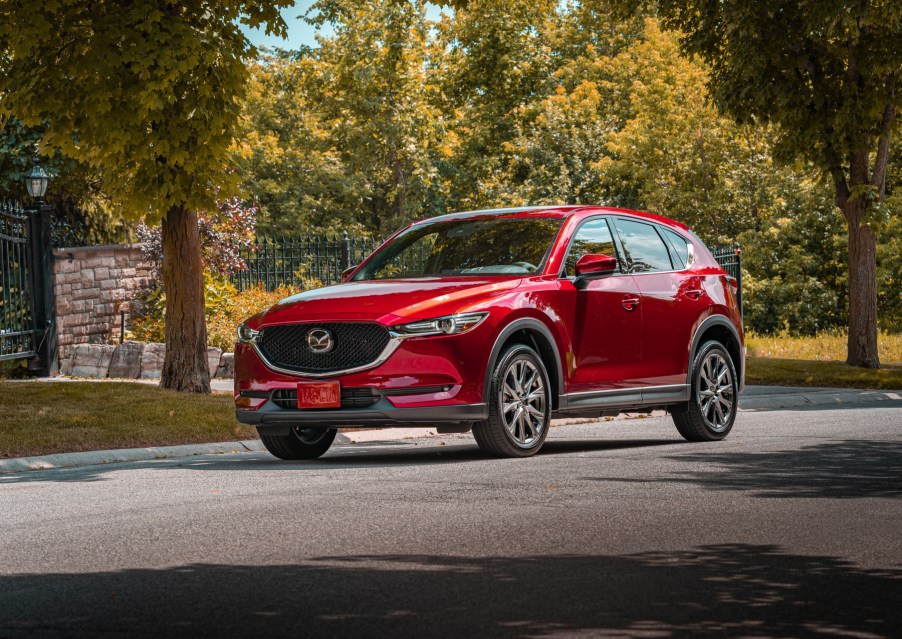
The Mazda CX-5 Diesel Is the Dead Crossover You’ve Never Heard Of
The Mazda CX-5 is a well-known and respected crossover in the U.S. market. There is a lot to like from its excellent standard tech features, high-quality interior, and powerful engine options. However, not all of the CX-5‘s trim levels are quite so popular. This is where the Diesel trim level comes in. According to Motor1, Mazda just killed the Diesel trim for the U.S. market for unsurprising reasons.
What is a Mazda CX-5 Diesel?
The recipe for the Mazda CX-5 Diesel is a simple yet expensive one. According to Motor1, the diesel-powered variant arrived for the 2019 model year. Under the hood lives a 2.2-liter twin-turbocharged engine. Total power output is rated at 168 hp and 290 lb-ft. Unfortunately for buyers, this variant of the CX-5 was offered exclusively as a top Signature trim with all-wheel drive. As a result, Motor1 reports that this crossover carried a wallet-killing base-rice of $42,045.
However, this Mazda CX-5 Diesel had a decent upside over a standard Signature model. Since the current Signature models come standard with a more powerful turbocharged engine, their fuel-efficiency suffers. A gas-powered CX-5 Turbo with AWD consumes 22 mpg in the city and 27 mpg on the highway. In contrast, Motor1 reports that the diesel variant featured estimated consumption figures of 27 mpg in the city and 30 mpg on the highway.
Aside from the obvious powertrain differences, both of these models were identical elsewhere. Regardless, it seems the diesel-powered variant never truly caught on.
Why did Mazda kill off this model?

If you take one look at the U.S. crossover market, you’ll quickly realize that diesel-powered models are virtually nonexistent. According to CarsDirect, GM already killed off the diesel-powered Equinox and GMC Terrain, leaving few options available.
It should come as no surprise then that the Mazda CX-5 Diesel is being kicked to the curb for poor sales figures. According to CarsDirect reporting a message from Mazda spokesperson Justin Pagtalunan, “After evaluating consumer demand, Mazda will no longer offer the Skyactiv-D diesel engine in the US market.”
According to CarSalesBase, sales for the Mazda CX-5 remain fairly strong in the U.S. As a matter of fact, 146,420 units of the crossover found new homes in 2020 despite a global pandemic. Unfortunately, Mazda does not offer a sales breakdown by trim levels. Regardless, the diesel-model sales must’ve been fairly poor to pull the plug in less than two model years.
Aside from the Mazda CX-5, the Bureau of Transportation Statistics reports that around three percent of brand-new vehicles in the U.S. feature a diesel powertrain. As a result, it won’t surprise you to learn that Mazda plans to continue utilizing this discontinued powertrain in other markets across the world.
Should you buy one in 2021?

While the Mazda CX-5 Diesel had a fairly high base price when new, the used market is filled with these crossovers. One quick look on AutoTrader reveals that you can find one of these diesel-powered crossovers for less than $30,000. If we consider that these models are just two years old and carried a $42,045 base price, there are some serious savings available.
Additionally, it is worth reiterating that all of the diesel models feature the highest trim available. As a result, if you’re shopping around for a used CX-5, a fuel-efficient diesel may be the way to go.


